Solar panel savvy
Improvements in solar panels give boaters more power and choices.
By Jeff Moravec
There may or may not be any truth to the notion that solar power wouldn’t exist on boats were it not for the desire to find an energy-efficient way to keep adult beverages cold.
But if in fact that’s a motivation, it’s not the only one, according to fabricators who say they’re spending an increasing amount of their time these days installing solar panels. Dealers of “sustainable” boating items—including solar panels, battery systems and the like—also report growing interest in their products.
“Boaters are consuming more power than they used to,” says Tom Whitehead, technical sales representative at OceanPlanet Energy Inc. in Bath, Maine, a company that markets a wide variety of marine energy systems.
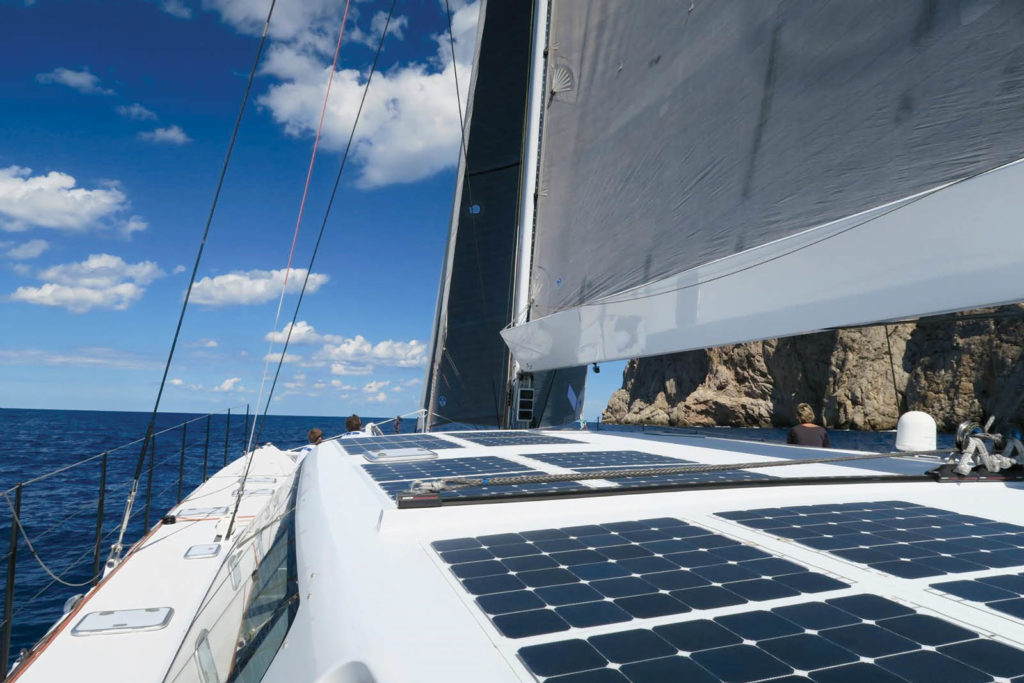
“Owners are mounting more toys on the boat,” explains Vicki Babylon, owner of Canvas by Victoria in Worton, Md. “They want to be able to plug in their phones and tablets, to be able to run television sets.”
“A typical request is, ‘I want to leave my boat on the mooring, and I want to keep the refrigeration going without running my batteries down,’” adds Whitehead. “‘How big of a solar panel do I need to keep up with my fridge?’”
Then there’s the other end of the spectrum, he says, such as the owners of lightweight yachts who forgo generators and want solar panels as part of an energy system that can run such power-hungry equipment as air conditioning.
In addition, says Jay Hanks, owner of Allerton Harbor Canvas LLC in Hull, Mass., “A lot of boaters hate running their engines at night to charge their batteries. Noise is a factor, but it also uses fuel, and in any case diesel engines shouldn’t be run at idle for long periods.”
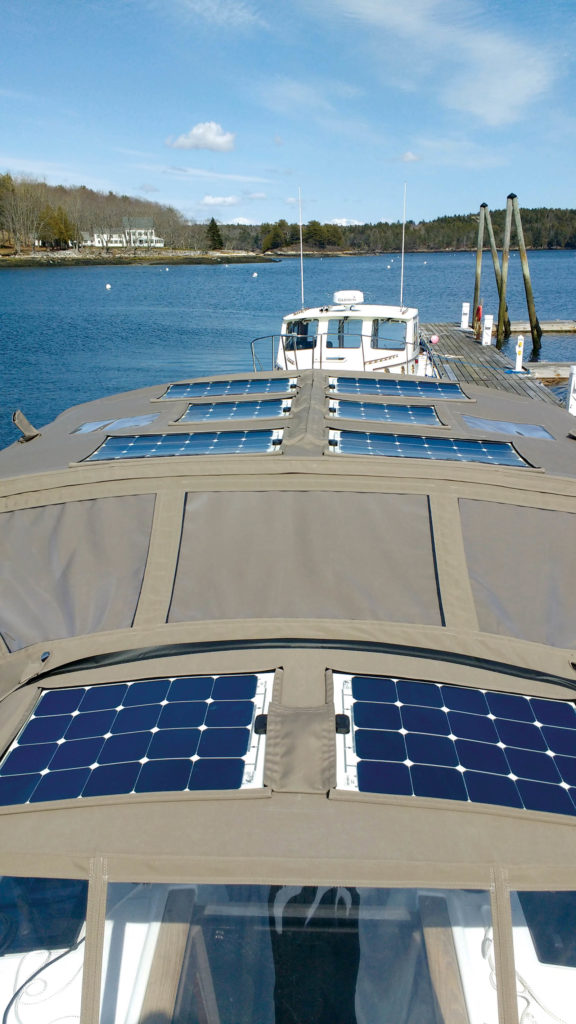
Solar power grows up
Until recent years, however, solar power just wasn’t an attractive alternative. “Solar panels were rarely being built for marine applications,” explains Whitehead. “Now they are, and they’ve improved a lot.”
The issue with solar power is that each boater’s energy requirements are unique. There is no one-size-fits-all.
“What we ask customers is ‘How are you managing your system?’” says Whitehead. “We encourage people to become more aware of their energy use and do load calculation studies so we can size the battery bank appropriately. That’s what helps determine the proper solar panel needs.”
“The challenge for a boat owner is usually around obtaining the correct wattage and how the solar panels can be integrated,” adds John Bland, managing director of TecSew Ltd., a boat cover maker in Lee-on-Solent, England. “We can look at what size panels will work and configure it to facilitate the wattage required.”
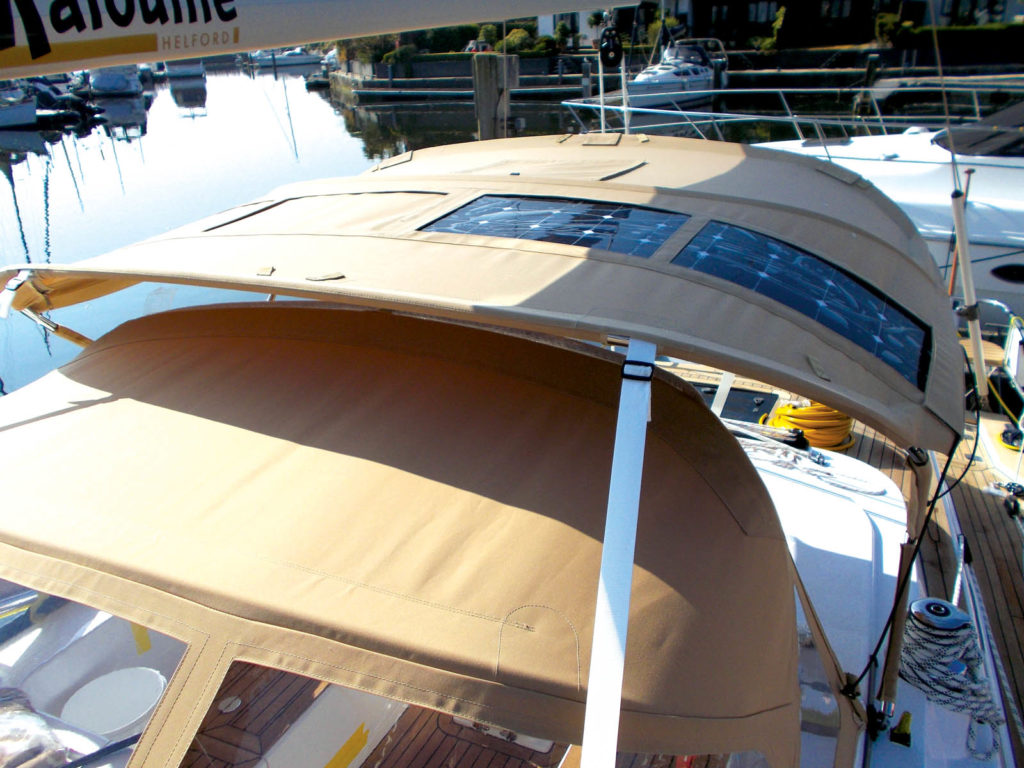
Flexible panels come of age, but …
Not long ago, virtually all solar panels in marine applications were hard panels, usually mounted in frames atop poles. “My calls would be, ‘I need poles bent to put my hard panels on,’” explains Babylon. “So I’d go over and teach them where to put the struts and measure the legs.”
But, she says, “Three years ago, all of a sudden we started getting calls to put flexible panels on canvas, and that’s what we’ve been doing since—sewing panels into canvas.”
A wide variety of methods are used to attach the panels to biminis and dodgers. Most of Babylon’s customers want them attached with zippers, with a Velcro® flap covering the zipper. Hanks, on the other hand, says his company prefers a system of hook and loop with flaps.
“In our system, the edges of the panel never touch the bimini,” he says. “We attach hook and loop to the panel and both sides of the flap, and it allows a full seal all around, covering the sharp edges of the panel.”
“Many panels can also be bought with grommets or zippers already attached,” adds Bland.
However they are installed, according to Babylon, “Flexible panels are less intrusive, they’re lighter, and they last for a very long time.”
But hard panels still have their adherents, especially among people with larger boats that can accommodate them (powerboats versus sailboats, for example), as well those with high power requirements.
“At this stage, hard panels are still much more efficient [in converting sunlight to power] and a lot cheaper than soft panels,” maintains Dave Elliott, owner of David’s Custom Trimmers, in Wakerley, Australia. “We build the frame system that goes over the top of the bimini that houses hard solar panels, and that frame system is fully adjustable. You can move the panel sideways as well as forward and backwards. So if the hard panels continue to get cheaper and more efficient, the boat owner can upgrade if they so choose without needing to change holes in a bimini.”
Because hard panels can offer more power and efficiency, “if you have room, go with a hard panel,” says Hanks. “But they are a chore in terms of getting them mounted or taken down. Flexible panels are a much more streamlined solution.”
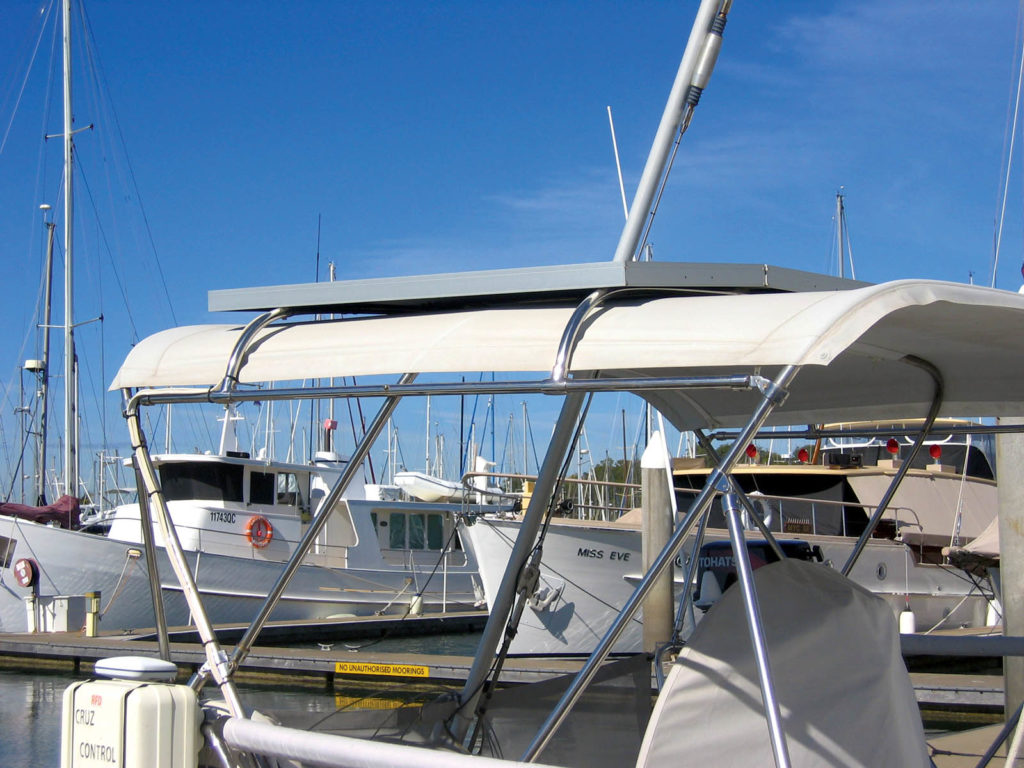
Panel quality varies
“All solar panels are not created equal,” says Cat Sieh, shop manager at Oyster Creek Canvas Co., in Bellingham, Wash. “We have customers come in with a panel they bought online and they have no idea that panel is not going to last very long.”
Sieh says her company works closely with local marine electricians to help educate boat owners about the best purchasing options. “We’re trying to drive change,” she explains. “People see the cheapest price and go for that, but it may not necessarily be what they need.
“I actually see the cracks in these really cheap panels,” she says. “The cells are so easily broken, and once they break the panel is not functional. A cheap panel is not a good investment.”
Whitehead agrees. “Customers will say that a panel we sell costs more than $1,000 and they can get the same thing online for $250,” he says. “I say, ‘Go ahead and buy that panel and when you’re in Fiji and it fails, try calling Amazon to see if you can get a replacement.’
“Part of what we sell is service,” Whitehead adds. “We’re here when you need us. We do troubleshooting all over the world. With the level of communications that’s available today, it’s not unusual for me to get a satellite phone call from the middle of an ocean somewhere.”
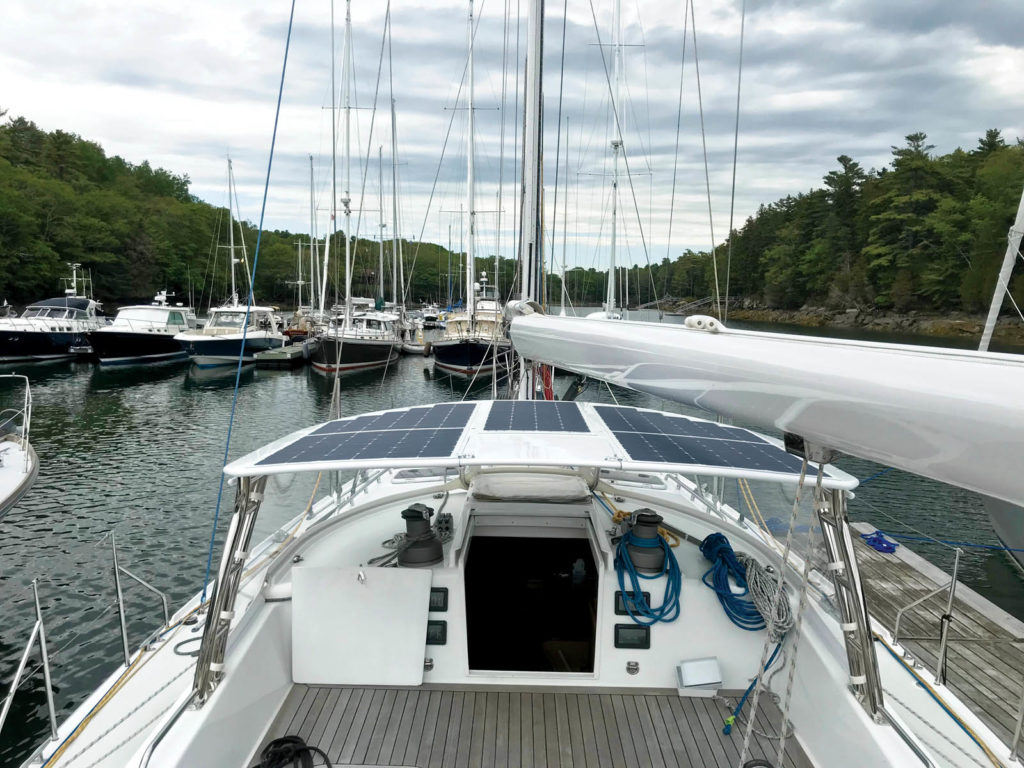
The other end of the power system
Whether in conjunction with the installation of solar panels or not, boaters looking to improve their power system often look at tweaking their electrical setup, often with the addition of lithium-ion batteries.
“A lot of people are focused on batteries because, in the marine environment, they die early deaths due to never being charged fully or properly,” says Whitehead. “It’s a big expense for a boat owner replacing batteries every couple of years when they expect them to last seven to 10 years.
“There has been a fairly dramatic change in lithium-ion batteries in the last 10 years,” he says. “Not just the batteries, but the battery management system [BMS], which is really important to remember.”
When contemplating a change, the recommendation from Whitehead is to “start clean with everything.”
“What a lot of people don’t anticipate is that if you’re upgrading a system, electrical components are fairly organic—they talk to each other,” he explains. “You may have a battery charger that’s 10 years old and it’s not custom-programmable for the specifics the lithium-ion battery needs.
“With lithium-ion, you need the BMS to manage the system, to turn it on and off, which is kind of a big change for nautical folks, who are used to slapping in their six-volt flooded batteries and forgetting about them until they die,” he explains. “They’re not used to having something that turns their battery off because the voltage got too low. It’s another kind of world.”
In the end, using solar power can save wear and tear on a boat’s engine, eliminate or reduce the need for a generator, can take up less space than batteries, and is gentler on the environment. But it does cost more upfront than just adding a couple of new batteries.
“It’s a longer-term investment,” says Sieh. “But we think it’s just a sensible choice.”
Jeff Moravec is a freelance writer from Minneapolis, Minn.
 TEXTILES.ORG
TEXTILES.ORG 






